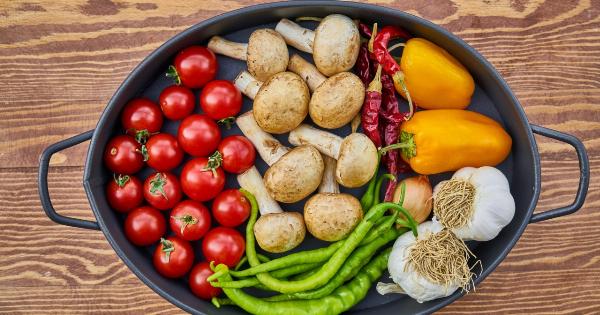Premenstrual syndrome (PMS) is a set of physical and emotional symptoms that many women experience in the days leading up to their menstrual cycle. These symptoms can range from mild to severe and can greatly impact a woman’s quality of life.
While there is no cure for PMS, certain foods can help alleviate the symptoms and provide relief. In this ultimate PMS food guide, we will explore the top foods that can help you manage your PMS symptoms and make your menstrual cycle more bearable.
1. Leafy Green Vegetables
Leafy green vegetables, such as spinach, kale, and Swiss chard, are rich in essential nutrients like magnesium, calcium, and vitamin B6. These nutrients can help reduce bloating, ease muscle cramps, and alleviate mood swings associated with PMS.
Incorporating a generous portion of leafy greens into your meals can provide your body with the necessary nutrients to combat PMS symptoms.
2. Fatty Fish
Fatty fish like salmon, mackerel, and sardines are packed with omega-3 fatty acids. These healthy fats have anti-inflammatory properties and can help reduce PMS-related pain and inflammation.
Omega-3s also support brain health and can alleviate mood swings and irritability commonly experienced during PMS.
3. Complex Carbohydrates
Choosing complex carbohydrates over simple sugars can help regulate blood sugar levels and improve mood stability during PMS.
Opt for whole grains like quinoa, brown rice, and oats, which are rich in fiber and can provide a steady release of energy throughout the day. This can prevent energy crashes and sudden mood swings.
4. Nuts and Seeds
Nuts and seeds, such as almonds, walnuts, flaxseeds, and chia seeds, are excellent sources of omega-3 fatty acids, vitamin E, and magnesium. These nutrients can help reduce inflammation and relieve PMS symptoms like bloating and breast tenderness.
Additionally, their healthy fats can aid in balancing hormones and stabilizing mood swings.
5. Bananas
Bananas are not only a delicious and convenient snack but also a great food for managing PMS symptoms. They are high in vitamin B6, which assists in the production of serotonin—a neurotransmitter that regulates mood.
Consuming bananas can help alleviate mood swings, irritability, and even food cravings during PMS.
6. Avocados
Avocados are a nutritional powerhouse and an excellent source of healthy fats and vitamin B6. The healthy fats in avocados can help reduce inflammation and stabilize hormone levels, while vitamin B6 supports brain health and mood regulation.
Adding avocados to salads, sandwiches, or smoothies can provide relief from PMS symptoms.
7. Dark Chocolate
Good news for chocolate lovers! Dark chocolate with a high cocoa content can be beneficial for managing PMS symptoms.
Rich in antioxidants and magnesium, dark chocolate can help reduce bloating, improve mood, and even alleviate chocolate cravings that commonly occur during PMS. Enjoy a square or two of dark chocolate guilt-free during your cycle.
8. Herbal Teas
Herbal teas like chamomile, peppermint, and ginger can be soothing and comforting during PMS. Chamomile tea has calming properties that can reduce stress and anxiety, while peppermint tea can help ease menstrual cramps.
Ginger tea is an excellent choice to relieve nausea and bloating associated with PMS. Swap your regular tea or coffee with these herbal options for added PMS relief.
9. Oranges and Citrus Fruits
Oranges and other citrus fruits like grapefruits and lemons are not only refreshing but also high in vitamin C. Vitamin C is an immune-boosting antioxidant that can help reduce inflammation and support hormone balance during PMS.
Including citrus fruits in your diet can provide relief from common PMS symptoms.
10. Water
Staying hydrated is crucial during PMS as it can help alleviate bloating, fluid retention, and fatigue. Drinking an adequate amount of water can also help with headaches commonly experienced during this time.
Aim for at least eight glasses of water per day and consider adding slices of lemon, cucumber, or mint to make it more enjoyable.
By incorporating these PMS-friendly foods into your diet, you can reduce the severity of your symptoms and improve your overall well-being during the menstrual cycle.
Remember that every woman is unique, so it’s important to listen to your body and see which foods work best for you. By making smart dietary choices, you can make the symptoms of PMS more manageable and embrace each cycle with greater ease.































